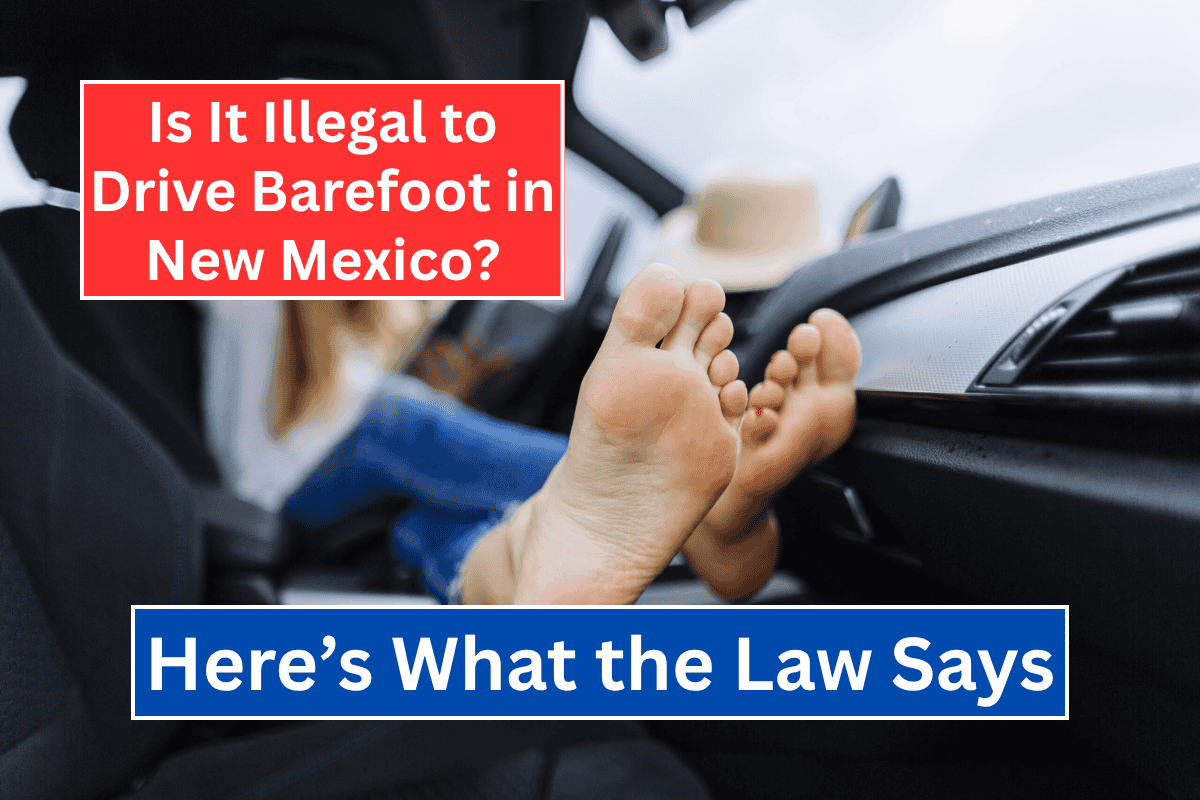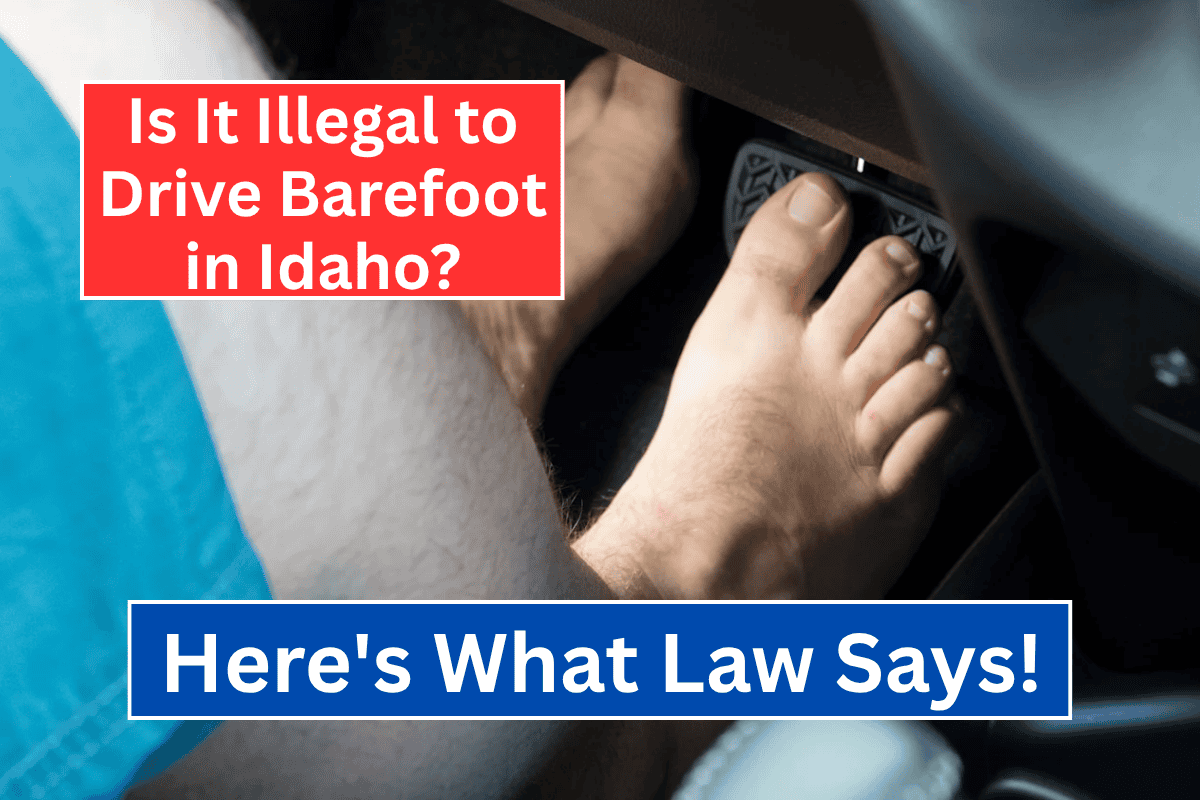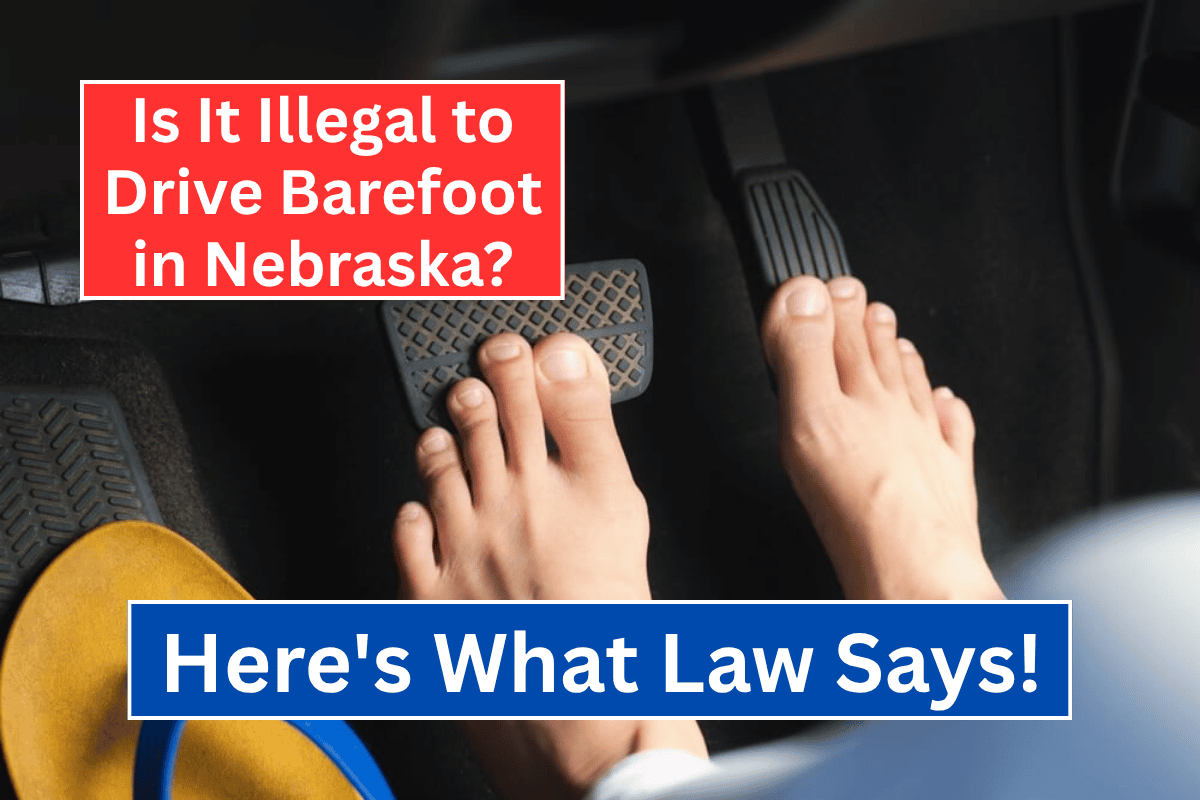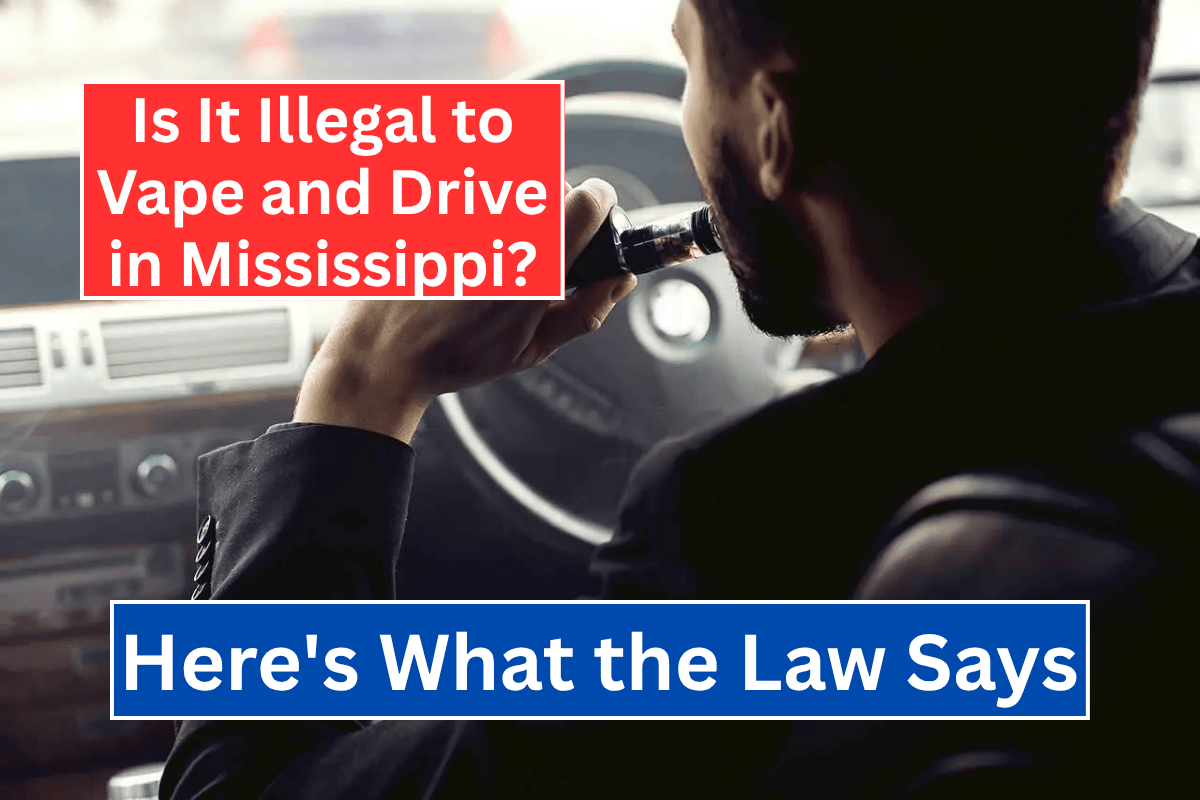In the United States, driving barefoot is legal in every state, including New Mexico. There are no federal laws that require drivers to wear shoes while operating a vehicle. However, while it may not be illegal, there are important safety concerns that drivers should be aware of when choosing to drive barefoot.
This article will break down the legal situation and the potential risks involved with driving without shoes, specifically in New Mexico.
Driving Barefoot: Legal or Not?
As mentioned, there is no law in New Mexico or anywhere else in the United States that explicitly forbids driving without shoes. The misconception that driving barefoot is illegal is quite common, but it’s not backed by law. Many people believe it’s unsafe, which may have led to the assumption that it’s also illegal.
Is Driving Barefoot Dangerous?
While driving barefoot isn’t illegal, it can increase the risk of certain hazards on the road. Here are a few reasons why driving without shoes might not be the safest choice:
- Lack of Traction: Bare feet can easily slip off the pedals, especially in situations where your feet get sweaty or wet. This can lead to a loss of control over the vehicle and increase the chances of an accident.
- Decreased Response Time: Without the proper fit and feel of shoes, your reaction time may be slower. In an emergency, this delay could be crucial in avoiding an accident.
- Foot Injuries: If an accident occurs, bare feet are more vulnerable to injuries like cuts, abrasions, or more serious wounds from broken glass or sharp metal fragments.
- Pedal Pressure: Applying pressure to the pedals without shoes can be uncomfortable and distracting. This discomfort might take your attention off the road, which is dangerous.
- Risk of Footwear Interference: If you leave your shoes on the floorboard or near the pedals, they could get caught, making it harder to brake or accelerate properly.
Despite the fact that driving barefoot is legal, these safety concerns highlight the importance of wearing suitable footwear for driving. Proper shoes can help maintain control over the pedals, reduce distractions, and provide better protection in the case of an accident.
What About Flip Flops or Sandals?
Flip flops and sandals may seem like a comfortable alternative to barefoot driving, but they come with their own set of risks:
- Loose Fit: Sandals and flip flops don’t provide a secure fit, which means they could easily slip off your feet while driving.
- Pedal Interference: These types of footwear can get caught under the pedals, preventing you from braking or accelerating properly, which could lead to dangerous situations.
Even though flip flops and sandals are legal, they don’t offer the same level of control or protection as closed-toe shoes. Therefore, it’s safer to avoid wearing flip flops or sandals while driving.
Can You Drive Barefoot on a Motorcycle?
When it comes to motorcycles, the laws are a bit different. While there are no federal laws explicitly banning barefoot motorcycle riding, several states have stricter guidelines on this issue due to the increased safety risks associated with motorcycle operation.
Barefoot riding is generally considered dangerous on a motorcycle, and it’s advisable to wear proper footwear for better grip and protection.
Can You Get Ticketed for Driving Barefoot if You Cause a Wreck?
Although there are no laws prohibiting driving barefoot, you could still face consequences if your barefoot driving leads to an accident. Some possible violations include:
- Negligent Driving: If driving barefoot is determined to be a contributing factor in an accident, you could be cited for negligent driving, as this shows a disregard for safety.
- Reckless Driving: If it’s found that your decision to drive barefoot was reckless and contributed to an accident, you might be charged with reckless driving.
- Failure to Exercise Due Care: Drivers are required to exercise due care while operating a vehicle. If driving barefoot results in a failure to exercise due care, it could lead to charges.
These violations could result in fines, insurance consequences, or more serious legal penalties if the accident leads to injury or property damage.
Why Do People Think Driving Barefoot Is Illegal?
The confusion about driving barefoot being illegal stems from several factors:
- Safety Concerns: The potential dangers of driving without shoes—such as slipping on pedals or foot injuries—might make people assume it’s illegal. People tend to associate safety concerns with legal restrictions.
- Advice from Law Enforcement: Many police departments advise against driving barefoot due to the safety risks. Some individuals interpret this advice as an official law, which contributes to the myth.
- Cultural Norms: In many cultures, it’s simply not considered appropriate to go barefoot in public, let alone drive without shoes. This cultural norm might make people believe driving barefoot is unusual and illegal.
In conclusion, driving barefoot in New Mexico is perfectly legal. However, while it is not against the law, it is not the safest option. The risks of slipping off the pedals, foot injuries, and distractions make it important to wear proper footwear when driving.
Additionally, while you won’t be ticketed for driving barefoot unless it contributes to an accident or a traffic violation, wearing shoes ensures you maintain control over the vehicle and protect your feet.
As a rule of thumb, always prioritize safety when on the road. If you must drive barefoot, ensure that you can still comfortably control the vehicle and be aware of the risks associated with driving without shoes.












